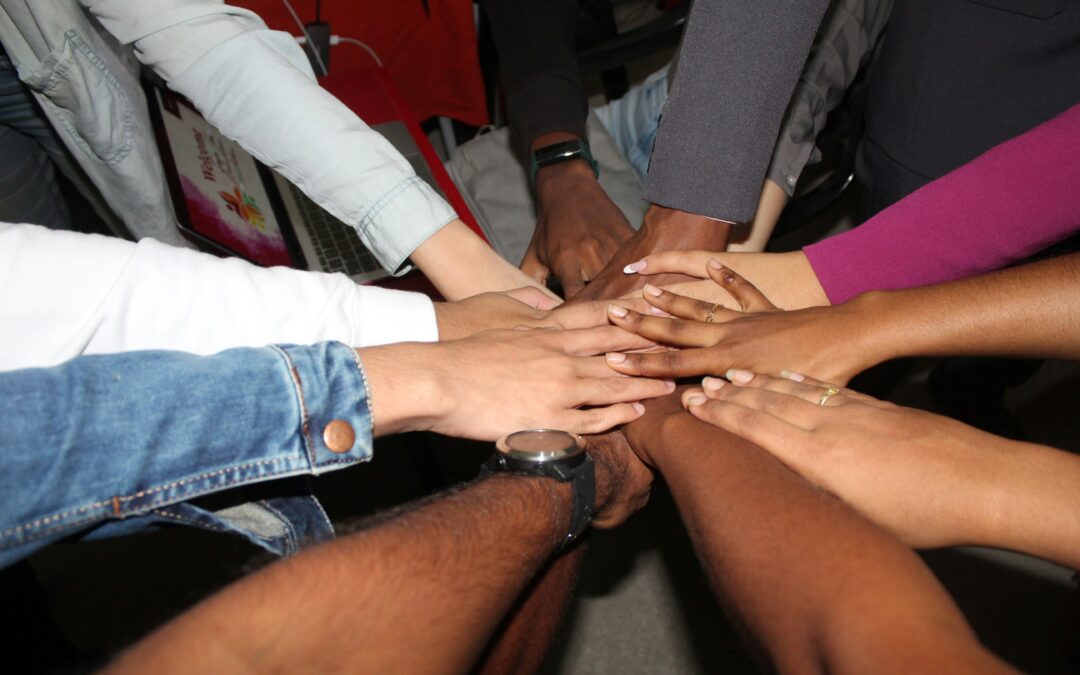Building kinship isn’t a one-time event or a quick-fix initiative. It’s a journey that requires attention and care.
When I think about the most extraordinary teams we’ve worked with over the years, what stands out isn’t their impressive credentials or even their remarkable results, though those were certainly present. What truly distinguished these teams was something deeper, something I’ve come to recognize as kinship.
I’ve talked about “the power of we” before—how collective intelligence and collaborative approaches drive superior outcomes. But today, I want to explore something that goes beyond traditional team dynamics to the heart of what makes teams truly exceptional.
The Kinship Difference
Kinship in the workplace isn’t just about getting along or even collaborating effectively. It’s about a shared identity and purpose as well as a mutual commitment that transforms how people engage.
We recently observed this phenomenon while working with a team navigating a platform migration. The technical challenges were significant, but what ultimately determined their success wasn’t their skills or expertise. What drove their success was their passionate commitment to one another and their deep connection to their shared purpose.
Late one evening, after everyone had left for the day, one engineer encountered an unexpected roadblock. Unsolicited, three separate team members dropped everything to come in and help. They had one another’s back and were committed to meeting their goals. “We’re all in this together” wasn’t just a slogan—it was their lived reality.
This is kinship in action—the willingness to show up for each other that goes beyond typical professional obligation.
From Psychological Safety to Collective Flourishing
While psychological safety creates the conditions where people can speak up without fear, kinship creates the conditions where people actively look out for one another’s success.
We’ve found that teams with strong kinship demonstrate three distinctive behaviors:
1. They transfer tasks seamlessly – When someone is overwhelmed, others step in without being asked, knowing their colleagues would do the same for them.
2. They celebrate collective achievements over individual recognition – The win belongs to everyone, and the spotlight is shared generously.
3. They invest in each other’s growth – Team members actively help each other develop new skills and overcome challenges, seeing each success as shared success.
One healthcare executive we worked with transformed her department by intentionally nurturing these behaviors. She started by modeling vulnerability—sharing her own challenges and asking for help when needed. This simple act shifted the team’s dynamic from competitive individualism to collaborative support.
Within six months, not only had their performance improved dramatically, but team members reported feeling “more like themselves at work” than ever before. The psychological burden of maintaining professional facades and office politics had lifted, freeing energy for creative problem-solving and genuine connection.
From Abundance to Kinship
Perhaps the most powerful catalyst for kinship is an abundance mindset—the belief that there is enough success, recognition, and opportunity for everyone. When team members stop seeing each other as competitors for limited resources and start seeing each other as allies in shared success, the foundation for kinship is laid.
We witnessed this transformation with a marketing team facing budget cuts. Rather than becoming protective of their individual projects, they adopted a collective approach to prioritization. They asked: “What will create the most value for our customers and our company?” rather than “How do I protect my initiative?”
This shift from scarcity to abundance thinking enabled them to make difficult decisions together while strengthening rather than damaging their relationships. The result was not just better business outcomes but a more resilient and supportive team culture.
Building Kinship in a Hybrid World
You might be wondering: can this kind of kinship be developed in today’s increasingly virtual workplace? The answer is yes, but it requires intentionality.
One leadership team we advised created “connection before content” as their meeting mantra. Every virtual gathering began with a brief but meaningful check-in that went beyond superficial pleasantries. They shared professional challenges, personal victories, and occasionally, the real struggles they were facing.
These moments of authentic connection created threads of understanding that strengthened their collaboration. When difficult decisions needed to be made, the foundation of kinship they’d built allowed them to navigate disagreements with respect and resolve conflicts constructively.
Another practice that fosters kinship in distributed teams is what I call “visible support.” This involves publicly acknowledging when team members help each other and creating systems that make mutual assistance visible. One engineering team implemented a simple “thanks channel” in their communication platform where members could recognize colleagues who had supported them. These acknowledgments were reviewed in team meetings, reinforcing the value of mutual support.
Your Kinship Journey
Building kinship isn’t a one-time event or a quick-fix initiative. It’s a journey that requires attention and care. Here are four practices you can begin implementing today:
● Set clear and ambitious goals – Establish targets that challenge and empower the team.
● Create space for authentic connection – Whether in person or virtual, dedicate time for team members to connect as whole people, not just roles.
● Recognize and celebrate mutual support – Make helping behaviors visible and valued in your team culture. Take a page from hockey and value the assists as much as the goals.
● Model vulnerability and interdependence – Demonstrate that asking for help and supporting others are strengths, not weaknesses.
The investment in building kinship pays extraordinary dividends. It not only delivers jaw-dropping results, but it will simultaneously improve the quality of people’s experience at work. In a world where burnout and disengagement are reaching epidemic proportions, creating workplaces where people feel truly connected to each other may be the most important leadership work we can do.

Melissa Norcross
Co-Founder and Chief Strategist
As a former Chief Strategy Officer and veteran operations and strategy consultant for firms including McKinsey & Company, Melissa’s work spans industries and the globe. Melissa has worked with organizations ranging from Fortune 100 companies to non-profits as well as private-equity funded turn-arounds. Melissa facilitates peer networks of senior executives in the digital and technology space through Collaborative Gain’s Councils. Melissa holds a BS in Engineering from MIT, an MBA from Harvard Business School, and a Ph.D. in Values-Driven Leadership, Corporate Social Responsibility, and Sustainability from Benedictine University’s Center for Values-Driven Leadership.
Learn more about Melissa here.
Are You Leading For Peak Performance?
Take this short assessment to gain insights on the kind of culture you’re fostering, how your leadership is impacting your team’s performance, and if you’re creating a great place to work.
Are you interested in learning how to lead your business through positive change? Click here to schedule an appointment.


